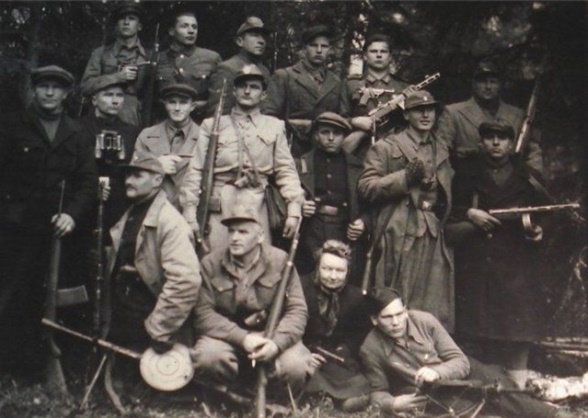
History 13/03/20 As the inhabitants of the Baltic States fought against the Soviets
the Process of active confrontation between the Soviet government of Lithuania launched immediately after the German attack on the Soviet Union. However, the decisive phase of the Baltic resistance began in the summer of 1944, when the Soviet-German front moved into the territory of Lithuania, Latvia and Estonia.
Short-term freedom of Lithuania
a year before the beginning of the great Patriotic war, all three Baltic States were annexed by the Soviet Union. In Lithuania anti-Soviet sentiment in the pre-war period manifested itself stronger than in Estonia and Latvia. Of the more than 40 thousand of the deported to Siberia of the population of these States and later the Soviet republics, about 17.5 thousand people were in Lithuania.
in 1940 the Lithuanian activist front – organization, the opposition of the current government began to promote the idea of return to the country lost independence. Ad Nazi Germany of war, the Soviet Union became the starting point for decisive action revanchist Lithuanian. In the uprising, which began on the day of the German attack on the Soviet Union, participated as civilians of Lithuania, and former soldiers of the rifle corps of the red Army stationed in the Republic. The vast majority of them (Lithuanians) defected – from 16 thousand with the retreating units of the red army took only two thousand.
100 thousand rebels under the leadership of the Lithuanian activist front took possession of the strategically important objects and entire cities left by the departing Red Army. They killed soldiers and officers of the red army, Communists and Jews. The leader of the rebellion was made by the teacher Juozas Ambrazevicius.
With the arrival of German fighters for independence of Lithuania was counting on the support of the Nazis. But the Nazis set up in the former Soviet Republic of their own rules, neither of which her autonomy and the Nazis did not want to hear. The Lithuanian activist front in August 1941 and was disbanded in.ricaso General Commissioner of Lithuania Adrian von Renteln. The leader of the organization of Ambrazevicius fled to the West from there since the mid 1940’s to early 1950-ies led the anti-Soviet underground. He lived to be 70 years old and died a natural death in the United States.
Forest brothers, Bandera, and others of that ilk
the Majority of historians are unanimous in the opinion that the Lithuanian uprising in 1941 only paved the way for the anti-Soviet underground struggle, conducted in the Baltic States in the years 1944-1949. She began in the summer of 1944, when Soviet-German combat operations began to be conducted in the Baltic territories.
According to some estimates, in 1945, when the partisan movement in the Baltic States was at the peak of its development in Lithuania fought about 30 thousand “forest brothers”. It was the largest of the national liberation Union in the country. Although historians have called different numbers on the size of the “forest brothers”, but they are all slightly different – plus or minus 3-5 thousand people. But the total number of members of nationalist groups Latvia was two times less than in Lithuania, in Estonia, did not reach 10 thousand. While the war went on, most of these guerrillas were recruits who deviate from service in the red army. Social category of the “forest brothers” were varied – farmers, former students, military personnel, etc.
When the hope of assisting the Nazis in the struggle against Soviet power at the “forest brothers” of the Baltic States collapsed, there was another landmark – the US and its allies. For a long time, the rebel movement in Lithuania, Latvia and Estonia fueled the sentiment expectation of aid from the West.
In 1946 with the organized thugs in Latvia and Estonia it was over. In Lithuania, the situation began to change in the spring of 1949, after the mass deportation of the population of the three Baltic republics. To the middle 1950-x of years the disparate groups of the Lithuanian rebels were still declared itself. But the mass resistance of the Soviet power in the Baltic region of speech does not go.
Russian Seven
Source:
© Russian Seven
Featured articles Share: Comments Comments on the article “How the inhabitants of the Baltic States fought against the Soviet power” Please log in to leave a comment! br>
Share on Tumblr
















